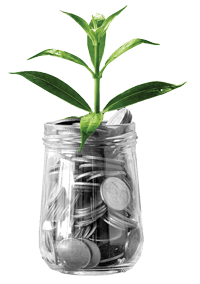All human beings are born free and equal in dignity and rights.2
Gender equality is a human right. It gives all people more choices and opportunities to reach their potential and live happy and fulfilled lives. Freedom from violence is also a human right, and is inextricably linked to gender equality because gender-based violence is both a driver and a consequence of gender inequality.Note 3 Gender equality is also good for the community and for the economy.Note 4 More equal societies are more cohesive, and gender equality boosts economic growth.Note 5
Gender equality cannot be achieved without addressing the rigid attitudes and stereotypes that affect people over their lifetime. Gender stereotypes see girls and boys treated differently from when they are babies. They shape the vocational aspirations of school-aged children, relationship dynamics for young people and adults, and can lead to women and men taking on roles at home and at work that flow through to economic security at retirement. These attitudes can be produced and reinforced in households and institutions and are experienced differently across communities and cultures.
These individual experiences translate up to the national level. Compared with men, women experience much higher rates of gender-based violence, take on more paid and unpaid care work, earn less money, have very different experiences of the healthcare system, and are less represented in leadership and decision-making. Men are also constrained by rigid expectations, including to be the primary breadwinner, be less involved in care work and not seek help when they need it.Note 6
Not all people experience gender inequality the same way. Their experiences are influenced by factors including gender identity, race, disability, religion, culture, education, socio-economic status, age, location and sexual orientation. The way these characteristics interact mean people can experience overlapping forms of disadvantage and discrimination.
Australia has come a long way in its journey to gender equality, with gains in women's electoral rights, education, economic participation, reproductive rights and legal protections that are the result of energetic and persistent advocacy from women across the country. These gains cannot be taken for granted and significant challenges remain. No country has achieved gender equality and global shocks and crises – like COVID-19, climate change and conflict – show how easily progress can stall and regress.Note 7 Globally, many countries are now winding back women's rights.
The shifts needed to achieve gender equality can generate backlash, which can manifest in harmful ways – including violence. For example, in countries where gender equality is high, alarming rates of intimate partner violence against women persist.Note 8 The relationship between gender equality and violence is complex. Action to advance gender equality must bring the whole community along.
This Strategy builds on past gains and efforts and outlines where further work needs to be done. Gender roles, behaviours and attitudes have been shaped over generations and systems have been built up around them. There is no single simple action to close gender gaps and progress is neither inevitable nor irreversible. Sustained, methodical commitment and effort is required, within and outside of government, over the 10 years of this Strategy and beyond.

Gender equality gives all people more choices and opportunities to reach their potential and live happy and fulfilled lives.